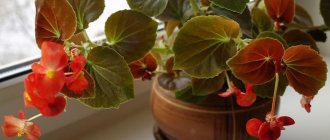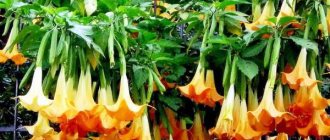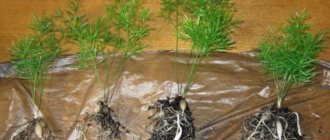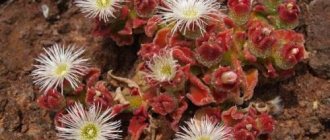Author: Elena N. https://floristics.info/ru/index.php?option=com_contact&view=contact&id=19 Category: Garden plants Published: January 25, 2019Last edits: November 03, 2020
- How to grow eustoma
- Homemade eustoma
- Tall garden eustoma for cutting
Why do gardeners love eustoma so much? For a stunning aroma in the front garden, for beauty comparable to a rose, for long (up to three weeks!) freshness when cut. In the 80s, the Japanese drew attention to a wild flower from the Indian prairies. It was they who gave the world hundreds of varieties and types of eustoma: summer and autumn, potted and garden, terry and bells, tall and dwarf, monochrome and two-color... April 1 - this is the date experienced flower growers call ideal for planting eustoma (seedlings) in the ground in the middle strip, regardless of the weather. And it's not a joke. The thing is that during the first months of life, eustoma develops very slowly, which means that both vigorous weeds and the first heat can easily destroy the baby! Early planting gives the delicate plant a chance to gain strength before the active growth of weeds and the start of intense heat.
- What other tricks might be useful to those who want to grow their own eustoma?
- What determines the flowering period of eustoma?
- What to do if the eustoma has bloomed before the end of “its” season?
Read our article.
Planting and caring for eustoma
- Planting: sowing for seedlings - in late February-early March. Planting seedlings in the garden - three months after germination.
- Flowering: second half of summer.
- Lighting: shade or partial shade.
- Soil: dry, loose, light, well-drained, neutral reaction.
- Watering: scanty, but regular. The best method of watering is drip.
- Fertilizing: with complex mineral fertilizers twice a month.
- Reproduction: seed.
- Pests: thrips, whiteflies, spider mites and slugs.
- Diseases: false gray rot, fusarium, late blight, powdery mildew, root rot, tobacco mosaic virus.
Read more about growing eustoma below.
Eustoma (lat. Eustoma) , also called lisianthus ( lat. Lisianthus - bitter flower), or “Irish rose”, or “Texas bell”, or “Japanese rose”, belongs to the Gentian family. Translated from Latin, “eustoma” literally means “beautiful mouth,” and in a more literary version, “beautifully speaking.” The homeland of eustoma is considered to be the south of North America, Mexico, the north of South America and the Caribbean islands. An American Indian legend says that eustoma first bloomed on the grave of an innocent girl killed by the spirit of war because she refused to become his wife. Irish doctor and botanist Patrick Brown discovered eustoma for Europeans.
The plant is very popular among flower growers as a cut plant, since freshly cut eustoma can stand in a vase with water for up to three weeks. It has been cultivated as a houseplant since the nineties of the last century.
- Indoor fern
Plant diseases
Due to lack of nutrition during the flowering period, as well as due to rainy weather, a fungus can multiply in the area:
- Mosaic virus. Causes the destruction of chloroplasts - cells that produce chlorophyll. White spots appear on the leaves, and the death of tissue areas leads to the death of the plants. There are no drugs for treatment, so more attention is paid to prevention.
- Late blight – blackening of leaves.
- Fusarium - yellowing and drying of leaves. The risk is higher at low temperatures and high humidity. During these periods, it is recommended to spray with preparations for prevention.
- Gray and root rot. With a lack of potassium, the plant is exposed to low temperatures and does not tolerate stagnant water. In weakened roots, with a lack of oxygen, rotting processes begin. The plant cannot be saved.
- Fitum - causes root rot. Theoretically, it can be treated by disinfecting the soil and soaking the roots in fungicides, but in practice it is very difficult to save a plant with a weak underground part.
Most often, with high air humidity in greenhouses, eustomas are affected by peronosporosis - downy mildew. For prevention, all old plant debris is removed, burned, and the soil is disinfected annually.
Botanical description
The stems of eustoma are strong, almost a meter high, but graceful, like a carnation. From the middle, the stems begin to branch, so the branch is a whole bouquet, which can contain up to 35 buds, blooming one by one. The leaves of eustoma have a grayish or bluish tint, they are lanceolate-oval, matte, as if made of wax. The calyx of the flower is funnel-shaped, large and deep. Eustoma flowers, double and non-double, 5-8 cm in diameter, in different shades - pink, lilac, white, purple, plain or with a contrasting border. When the eustoma bud is half-opened, it looks like a rose, but when the flower opens, it resembles a double poppy.
Eustoma is a biennial plant in nature; in the garden it is usually grown as an annual plant. Perennial eustoma is possible only in a potted version. In the ground, eustoma can be grown as an annual and biennial plant.
Features of cultivation
- eustoma prefers bright, diffused light;
- the best soil for eustoma is bark humus and peat in equal parts;
- propagated only by seeds, since cuttings do not germinate, and the too fragile root system does not tolerate division;
- It is necessary to water only after the substrate has dried 2 cm deep;
- try not to replant the plant: it is only conditionally perennial, and the roots will not tolerate replanting;
- home eustoma blooms best in a cool, ventilated room.
In the photo: Blooming purple eustomas in the garden
Growing eustoma from seeds
Growing eustoma at home is a painstaking and time-consuming task. However, for those who master this process, it can become a very profitable business, since eustoma is becoming increasingly popular both as a garden flower and as a potted crop. In this section we will talk about how to grow eustoma from seeds, and the main difficulty of this process is that eustoma seeds are too small: there are 23,000 of them in one gram! Purchased seeds undergo special treatment to increase germination, so out of a hundred such seeds, about sixty germinate.
If eustoma is grown from seeds for planting in the garden, then it should be sown in February or March, then it will bloom in July-August. The substrate is needed as for flower plants: sterilized, low nitrogen content, pH 6-7. After scattering the seeds, do not cover them with soil, just press lightly and cover the container with film or glass, leaving gaps for air circulation and providing additional illumination with fluorescent lamps for 10-12 hours a day.
The temperature for seed germination should be at least +20 ºC during the day and at least +14 ºC at night. Instead of watering, spray the seeds from time to time, although you are unlikely to have to do this for the first two months: there will be an excess of evaporated moisture.
If all conditions are met, seedlings should appear no later than two weeks, and as soon as this happens, you need to remove the coating and periodically spray the seedlings with Fitosporin solution. As soon as the seedlings have several pairs of leaves (this will happen in about a month and a half), plant them in pots with a diameter of 4-5 cm. After three months, the plant, along with a lump of earth, is planted in the ground.
- Varieties of gladioli and dahlias with photos
In the photo: White eustoma blooming
Eustoma at home
Planting eustoma
If you want to decorate your apartment with blooming eustoma in winter, sow from July to September. Fill a small container with a moist substrate consisting of sand and peat (1:1) and scatter the seeds over it. Place the container covered with film or glass in a warm (19-22 ºC) and bright place, spray the seeds if necessary, and in two to three weeks you will see shoots.
In the photo: Growing eustoma seedlings in tablets
Growing seedlings
As soon as the seedlings have the first pair of leaves, reduce the amount of moisture, allowing the top layer of soil to dry out between waterings. In the future, moisten only in the morning, so that, in order to avoid blackleg disease, the leaves are already dry in the evening and at night. When the sprouts have two pairs of leaves, you can plant them in separate pots and wait for flowering, which should occur in January-February.
In the photo: Eustoma seedlings in pots
Eustoma care
Growing eustoma in pots is not an easy task, since it urgently needs fresh air and bright, diffused light. The best way out is a western or eastern window in the room with the ability to maintain an optimal temperature for the plant of 19-22 ºC with regular ventilation. In addition, caring for eustoma involves moderate watering with settled soft water as the top layer of soil dries.
Try to avoid both waterlogging and drying out of the soil. There is no need to spray the plant, as this can lead to leaf diseases.
During the period of intensive growth and during the formation of buds, the eustoma needs to be fed with liquid complex fertilizers in a consistency of 10-15 ml per 10 liters of water. And, of course, it is necessary to remove faded flowers in a timely manner. Try to comply with these conditions, and your eustoma will delight you with its flowering again in 90-100 days.
In the photo: Growing eustoma on a windowsill
How to plant and care in the garden
How to grow eustoma
Eustoma garden can be grown from seeds, sown in December or January for flowering in June or July. Fifty-milliliter cups are filled with soil mixture for violets and 3-5 seeds are laid out on top, lightly pressing them into the ground, and covered with film so that the eustoma grows as in a greenhouse. The film will have to be lifted every 10 days to remove condensation from it and allow the seedlings to breathe a little. The optimal temperature for emergence after two weeks is 20-25 ºC. For the first couple of months, seedlings also need additional lighting, but even with all these necessary conditions, the seedlings will grow very slowly. At the end of February, the seedlings are placed on a sunny windowsill.
In the photo: Growing eustoma in the ground
Planting seedlings
As a disease prevention, spray the seedlings with a solution of Fundazol at the rate of 1 teaspoon per 1 liter of water, and for faster growth - with Zircon or Epin. A month and a half after the emergence of seedlings, when they already have a couple of leaves, plant the seedlings in pots of 3-5 pieces, immersing the lower leaves in the soil. Don't forget to water and cover each pot with a plastic bag for a greenhouse effect.
- Why do you need to sow seeds with a reserve, and how not to lose money by sowing too much?
How to grow freesia - at home and in the garden
In a week, the seedlings will double in size. At the end of February or beginning of March, transplant the seedlings into larger pots (diameter 8 cm) together with an earthen ball using the transfer method, having first placed a drainage layer in the pots. Now they will grow up, waiting to be planted in the ground.
In the photo: Eustoma seedlings at home
Growing eustoma in the garden
In mid-May, when the risk of frost is behind us, the seedlings are planted in open ground. Choose a place for eustoma that is protected from drafts, with good drainage, and light, but the light should be diffused. Planting is carried out in the evening or in cloudy weather. The seedling is immersed in a well-moistened hole along with a lump of earth in which it grew in a pot.
Eustoma grows as a bush, so it should be planted at a distance of 10-15 cm from each other. After planting, cover the seedlings for the first 2-3 weeks with glass jars or cut-off plastic bottles, and during this time you may not water them. We have already written about watering, but let us clarify once again: eustoma is harmed by both increased soil moisture and lack of moisture.
In the photo: Eustoma blooming in a flowerbed
When 6-8 leaves form on the stem, pinch the top to help the plant branch better. About a month after planting, when the seedlings are already well rooted, they need to be fed with soluble mineral fertilizers. Plantafol is suitable for this purpose. In June, spray the eustoma with Plantafol growth with a high nitrogen content, and in July and August - with Plantafol budding solution. You can use the drug Kemira, it is dissolved in water and watered at the roots of the plants. Just try to use the drugs in slightly lower concentrations than the manufacturers suggest.
Conditions for growing alstroemeria in the garden
The beginning of eustoma flowering depends on when you sowed the seeds. If sowing took place at the end of November or beginning of December, then the eustoma will begin to bloom in early or mid-July - it also depends on what kind of spring it will be. If you sow the seeds in mid-January, flowering will most likely begin in August. After flowering begins, this process does not stop until the end of October: some buds fade, others bloom, and so on.
Blooming eustoma is not afraid of early frosts, and only with frost of -10 ºС and snowfall can the flowering of eustoma stop. If your eustoma has bloomed early, cut off the faded flowers, and, quite possibly, the eustoma will bloom again in six weeks.
In the photo: Eustoma blooming in a pot on the windowsill
Among the pests of eustoma, aphids, slugs, whiteflies and spider mites are dangerous. To protect against insects, you should use Aktara, Fitoverm, Actellik or Confidor. Eustoma is affected by powdery mildew, fusarium or gray mold, from which it can be protected by preventive spraying with Fundazol or the use of the drug Ridomir Gold.
Plant garter
For tall lisianthus with large inflorescences, it is recommended to make supporting supports. These can be pegs driven into the ground or vertically positioned nets that protect the stem from refraction.
In greenhouses, a horizontal mesh is used, which is raised as the flower grows. Seedlings are planted taking into account the location of the mesh cells so that the seedlings are inside.
The net or pegs need to be disinfected. To do this, use potassium permanganate or fungicidal preparations, which are used to prevent fungus. You can whitewash the pegs with lime.
Eustoma after flowering
Homemade eustoma
The stems of faded potted eustoma are cut so that 2-3 internodes remain on them, and they are transferred for storage to a room with a temperature of +10-15 ºC. Watering during the dormant period is rare; there is no need to feed the plant. In the spring, when you see new shoots, carefully replant it along with the earthen ball into new soil and resume watering and normal care.
Garden eustoma
You can extend the flowering period of your garden eustoma by replanting it together with garden soil in a pot and moving it to a balcony or windowsill. In the house, with normal care, it will delight you with flowering for some time. But a period of rest occurs in all plants. After the flowers have withered and the leaves have yellowed, the garden eustoma is treated in the same way as the indoor one: the stem is cut at a height of 2-3 internodes and transferred to a cool, well-ventilated room, almost stopping watering. There she will wait for spring.
Choosing a pot/container
You can grow indoor eustoma in a permanent pot to save yourself the need to pick.
If you plan to transplant it into a flowerbed in the future, you will need 3 types of containers:
- A plastic rectangular container with holes in the bottom - for germination.
- Plastic cups - for diving.
- 0.5-liter plastic glasses or peat pots (they do not need to be removed when transplanting to a flowerbed) - for transferring.
Types and varieties
of eustoma Russell (Eustoma Russelianus) are grown as a potted crop of eustoma grandiflorum (Eustoma Grandiflorum) are grown as a garden crop . Some flower growers even believe that these are the same species, and while flower scientists find out who is right, we will divide the types and varieties of eustoma according to their intended purpose. Eustoma can be short (no higher than 45 cm) or tall. Tall varieties are grown in the garden for cutting, and low-growing varieties are grown mainly as indoor or balcony varieties.
Tall garden eustoma for cutting
- variety : double eustoma, height 90-120 cm, flowers of blue, white, light blue and pink. Flowering is early, 2-3 weeks earlier than other varieties;
- variety Echo: height 70cm, spreading stems, large flowers, early flowering, 11 color variations, both single-color and two-color;
- variety : plant height 90 cm, simple flowers, abundant flowering, 15 color variations in the culture;
- Flamenco variety height 90-120 cm, strong stems, simple flowers, but very large (up to 8 cm), the main advantage is that it is not capricious. Many shade variations.
In the photo: Growing eustoma in open ground
Low-growing varieties of eustoma for growing in an apartment
- Mermaid: height only 12-15 cm, flowers are simple, up to 6 cm in diameter, shades of white, blue, pink and purple. Does not require pinching to enhance branching;
- LittleBell: does not exceed 15 cm in height, flowers are simple, medium-sized, funnel-shaped, of different shades, does not need pinching;
- Fidelity: white eustoma with multiple simple flowers located on the peduncle in a spiral, height up to 20 cm;
- FloridaPink: Pink eustoma with simple flowers that form a lined bouquet.
In the photo: How uzstoma blooms in the garden
Differences from annual flowers
Since a perennial can only be grown in a subtropical climate, its growth can reach 15-20 cm. An annual can grow in outdoor conditions and reaches a height of up to 1.2 m. Perennial eustoma requires a lot of gardener experience, and growing annual varieties can be done even by yourself for a beginner flower lover.
Long-term cultivation is possible only in indoor conditions.











